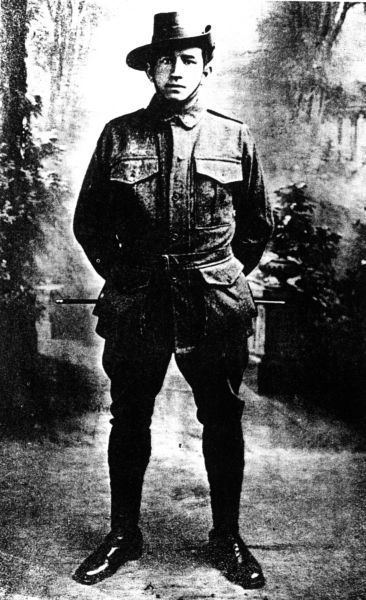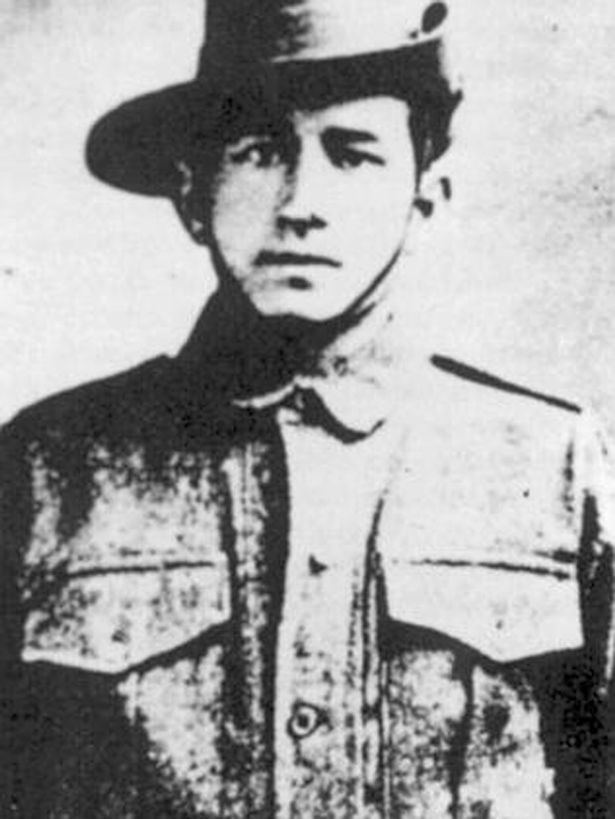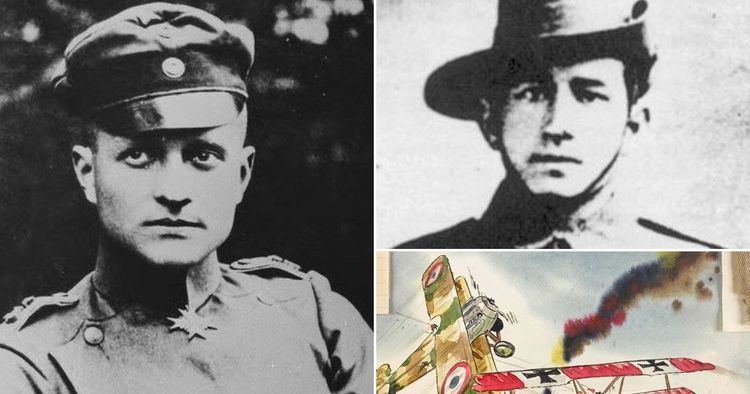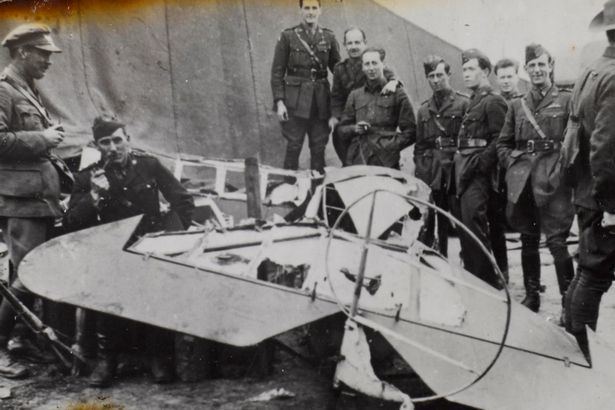Years of service 1916–1919 | Other work carpenter Unit 4th Division Name Cedric Popkin | |
 | ||
Battles/wars World War IWestern Front Battles and wars Western Front, World War I | ||
Cedric Bassett Popkin (Born 20 June 1890, died 26 January 1968) is considered the person most likely to have killed German ace Manfred von Richthofen — also known as the "Red Baron" — on 21 April 1918. Popkin was an anti-aircraft (AA) machine gunner with the First Australian Imperial Force (AIF), during World War I.
Contents

Early life

Popkin was born in Sydney on 20 June 1890 and was a carpenter by trade. When he enlisted in the AIF, in Brisbane on 6 May 1916, he was living in Palmwoods, Queensland.
Military career

Popkin left Australia on 20 October with the 6th Reinforcements, 7th Machine Gun Company on HMAT Port Lincoln. By April 1918, Popkin — who had achieved the rank of Sergeant — was a gunner in the 24th Machine Gun Company, part of the Australian 4th Division, which was stationed in the Somme Valley, France.
Death of the Red Baron

At about 10:35 a.m. on 21 April, Richthofen, flying his red Fokker Dr.I, engaged Sopwith Camels from 209 Squadron, Royal Air Force (RAF). He pursued a Camel piloted by a Canadian, Lieutenant Wilfrid May. In turn the Baron was chased by another Canadian pilot, Captain Roy Brown. The three planes flew over Morlancourt Ridge, in the 4th Division's sector, and Popkin — using a Vickers machine gun — and other Australian machine gunners and riflemen also fired at Richthofen. The Baron was hit by a 0.303 calibre bullet which passed diagonally from right to left through his chest. He then made a hasty but controlled landing, in a field on a hill near the Bray-Corbie road, just north of Vaux-sur-Somme. One witness, Gunner George Ridgway, stated that when he and other Australian soldiers reached the plane, Richthofen was still alive but died moments later. Another eye witness, Sergeant Ted Smout, reported that Richthofen's last word was "kaputt" ("finished") immediately before he died.
The RAF credited the "kill" to Brown, although it is now considered all but certain by historians, doctors, and ballistics experts that Richthofen was actually killed by an AA machine gunner firing from the ground. The identity of the person who shot the Baron remains uncertain; 0.303 ammunition was the standard ammunition for all machine guns and rifles used by British Empire forces during World War I. Many experts believe that the shot probably came from Popkin, though some believe that William John "Snowy" Evans may have been responsible. Autopsies revealed that the wound which killed the Baron was caused by a bullet moving in an upward motion. It was reported that a spent .303 bullet was found inside Richthofen's clothing. These facts, and the angle at which the bullet passed through Richthofen's body, suggest that he was killed by a long distance, low velocity shot from a ground-based weapon. Many Australian riflemen were also shooting at the Baron at the time, so one of them may have fired the fatal shot. However, Popkin was an experienced AA gunner, the volume of fire from the Vickers was far greater (at least 450 rounds per minute) than the bolt-action Lee–Enfield rifles (up to 30 rounds per minute) used by the infantry, and Popkin was the only machine gunner known to have fired at Richthofen from the right, and from a long distance, immediately before he landed.
Wounding and later life
On 19 June 1918, Popkin received a shrapnel wound to his right leg, which was later amputated. He was invalided back to Australia on 5 January 1919, arriving on 7 March. After being discharged from the army, he worked once more as a carpenter. He spent most of the remainder of his life in Tweed Heads and the Northern Rivers region of New South Wales. He died in Tweed Heads on 26 January 1968 At Age of 77. He is buried in Brisbane.
In 1964, Popkin told the Brisbane Courier-Mail: "I am fairly certain it was my fire which caused the Baron to crash[,] but it would be impossible to say definitely that I was responsible ... As to pinpointing without doubt the man who fired the fatal shot[,] the controversy will never actually be resolved."
Planned memorial
A memorial to Popkin is being planned for the hinterland town of Palmwoods by the local RSL sub-branch.
